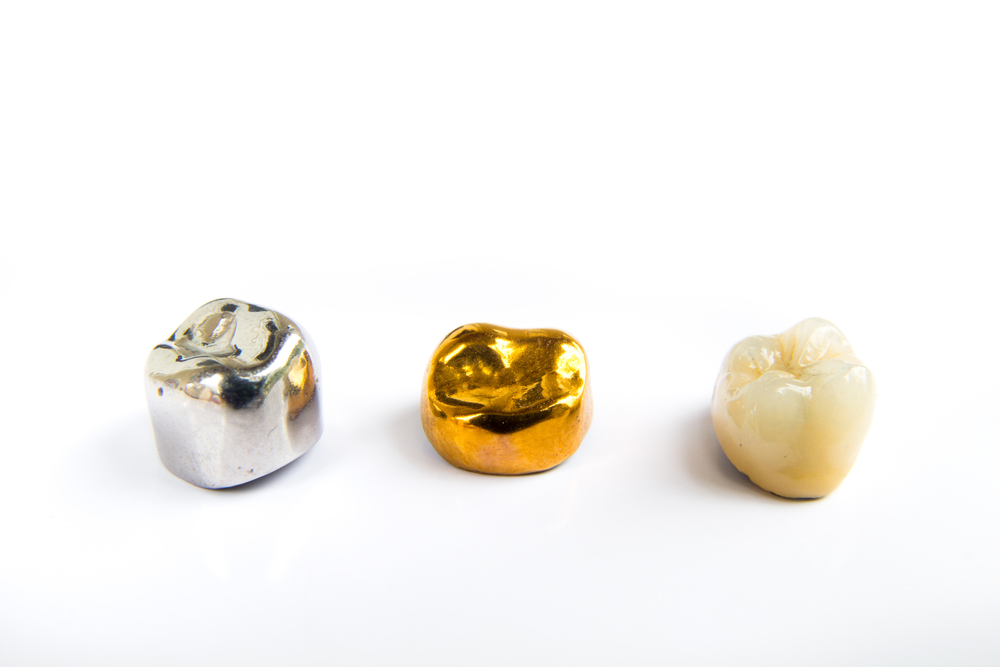How Often Should A Dental Crown Be Replaced?
Dental crowns are most commonly used to reconstruct teeth that have become damaged, for cosmetic reasons or where the heath of a tooth has become compromised – such as a pulp infection that requires a root canal treatment.
How long a crown lasts is dependent on many different factors but primarily the type of material that they are manufactured from.
- Porcelain crowns, which are the most popular as they are the least expensive, last up to 15 years.
- Metal crowns have a lifespan of around 20 years or longer.
- Gold or Zirconia crowns can last a lifetime.
However, there are circumstances under which a crown may need to be replaced much sooner than the estimated life expectancy. Some signs to be aware of that a crown is in need of replacement include:
1. Damage
Damage can occur to all types of crowns – even gold and zirconia although this is less likely. It can be as a result of biting down on a hard object or trauma to the mouth.
If the crown feels loose or there are rough edges, it is recommended to make an appointment with a dentist to assess whether replacement may be necessary.
2. Regular Wear And Tear
Regular biting and chewing are taken into account when determining the estimated life expectancy of a specific type of crown.
However, wear and tear can be hastened when chewing on harder substances, substances that are abrasive or eating foods and drinking beverages that are acidic. This acidity will corrode and cause damage to the crown.
Bruxism, which is basically grinding the teeth like chewing while sleeping can also increase wear and tear. A crown that has become worn sooner than its expiry date will need to be replaced.
A crown that seems smooth, does not seem to match up with the surrounding teeth or has worn away from the supporting tooth are signs that the crown needs replacement due to wear and tear.
3. Infection
A crown is designed to provide the same protection as the enamel of the tooth. However, this does not mean that infections and cavities cannot occur. In most cases, a crown will need to be removed in order to fill or treat a cavity that has developed in the tooth below.
Where infection of the dentin or pulp has occurred, a root canal will be necessary. The crown will need to be removed so that the infected pulp can also be removed. In most cases, a new crown will replace the one that has been removed.
Where an abscess has occurred, treatment with antibiotics to eliminate the infection will be the first course of action. However, if the infection does not resolve, the crown may need to be removed in order to drain the abscess and treat the infection.
A new crown will replace the old crown.
4. Receding Gum Line
Bacteria and plaque are just as likely to collect on and around a crown made from synthetic materials as they are on natural teeth. In fact, plaque-causing bacteria are more likely to collect around a crown which can result in the gums receding away from the tooth.
This is normally due to poor oral hygiene. It is important to take extra care when brushing and flossing around a crown to ensure that all bacteria are removed.
It could however also be a sign that the crown was poorly placed to start with. Visit your dentist at the slightest sign of gum sensitivity around the crown and ask for more information on proper care of the crown.
The most obvious sign that a crown needs to be replaced is when it falls out. This happens due to excessive wear and tear, trauma to the mouth or other dental conditions. Contact a dentist immediately if a crown has fallen out.
Are you searching for a reliable dental clinic in Taylors Lakes for dental crowns or other dental procedures? If so, then look no further than Gardens Dental.
Gardens Dental offers a full array of dental services in Taylors Lakes and Caroline Springs to help you and your family maintain healthy teeth.
To learn more about our services or make an appointment, please contact us today on (03) 9449 2626 or through our website.

